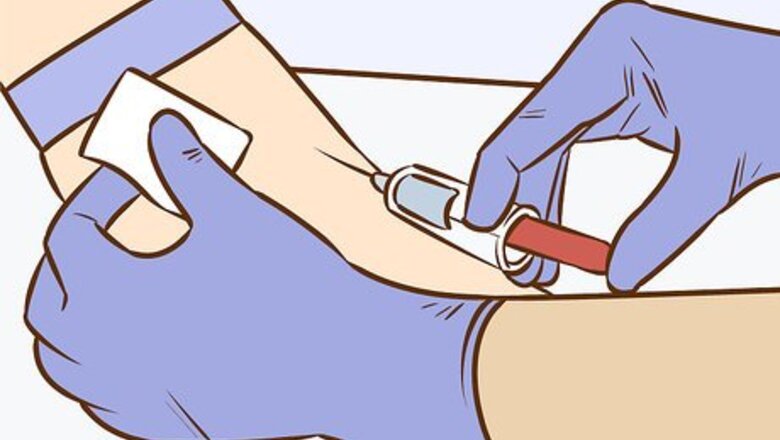
views
Determining Which Alleles Could Be Passed Down
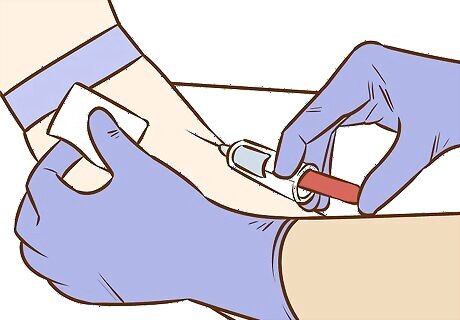
Have your blood type tested by professionals. Healthcare professionals have the ability to test your blood type. Request the test be done at your next appointment. Alternatively, you can donate blood to an organization (e.g. Red Cross) and they will test your blood type and inform you of the results. There are four possibilities: A B AB O
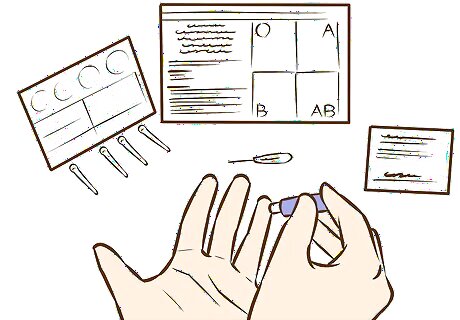
Test your blood type at home. An alternative to having professionals test your blood type is to do it yourself. You can order blood type testing kits. With these kits, you will expose your blood to a series of antibodies, and draw results by analyzing which antibodies affect your blood.
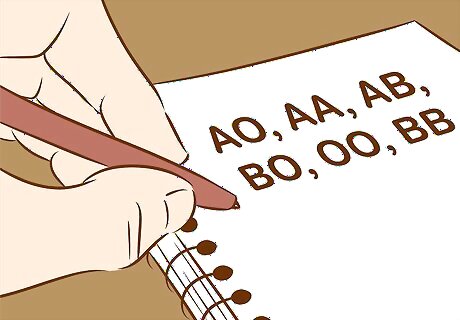
Determine possible allele combinations for both parents’ blood types. Knowing each parent’s blood type allows you to find which genes may be present in each parent. Different combinations of genes can express the same blood type because some genes are dominant and some are recessive. For example: The blood type O means that the parent has two O alleles. This is because O is recessive and only expressed when both alleles match. The blood type A means that the parent either has two A alleles or one A and one O. This is because A is dominant and will be expressed any time it is present. The blood type B means that the parent either has two B alleles or one B and one O. This is because B is dominant and will be expressed any time it is present. The blood type AB requires one A allele and one B allele. Both are dominant and expressed equally.
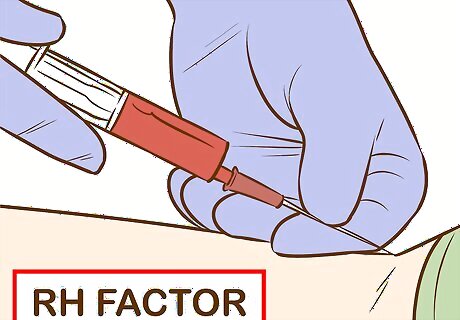
Include Rh factor. Testing for the most prominent blood antigens (A and B) will determine whether you are A, B, AB, or O. However, the Rh factor is another important antigen that can affect how your blood reacts to a transfusion and can be vital for pregnant people. Testing for the Rh factor is similar to testing for the other antigens. The blood is exposed to antibodies, if it reacts, you are Rh positive. If it does not react, you are Rh negative. While this factor is important for medical purposes, it is not needed for simple blood typing predictions. Considering the Rh factor makes the prediction more complicated as it doubles the number of possible blood types: A A B B AB AB O O
Drawing the Punnett Square
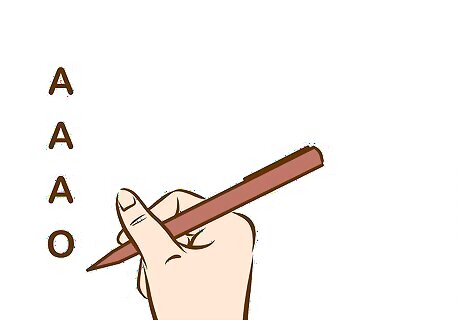
Make a column for the father’s possible alleles. A Punnett square is used to find genotype. Start making the square by writing all of the possible alleles of the father down a column on the left hand side. This accounts for the first half of the baby’s genetics. For example, if the father has the blood type “A,” you would need to list allele combinations “A,A” and “A,O.” That would mean you have four alleles going down the leftmost column (three A’s and one O).
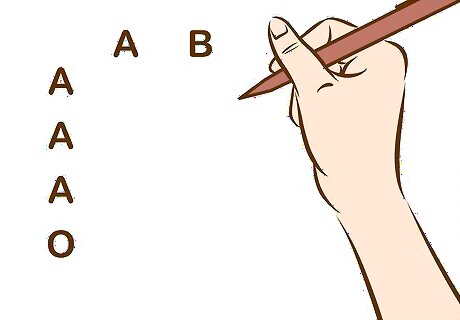
Put the mother’s possible alleles across the top row. Next, write the mother’s possible alleles across the top row. These alleles account for the other half of the baby’s genetics. This will allow you to predict which alleles the baby could inherit from the mother and the father. For instance, if the mother had the blood type “AB,” there is only one allele combination that could produce it. That means you would write two alleles in the first row (one A and one B). A Punnett square can be used to determine other traits as well. For example, you can use a Punnett square to predict your baby’s eye color.
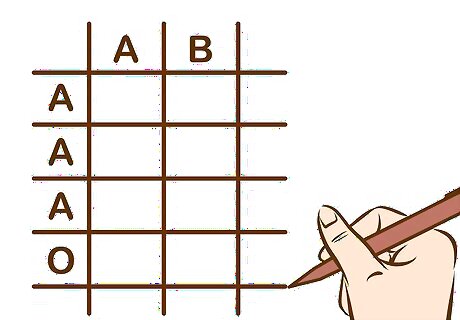
Draw a row corresponding to each allele in the first column. The number of rows in a Punnett square is set by the number of possible alleles on the father’s end. This will vary depending on the father’s blood type. If the father has a homozygous blood type, there will be fewer rows. If his blood type could be heterozygous, there will be more rows. Homozygous means that the father carries only one type of allele (O,O). Heterozygous means that the father carries two different alleles (A,O).
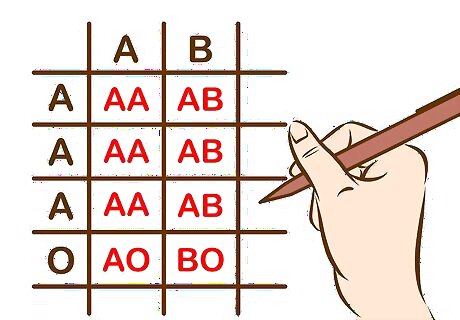
Place a column under each allele in the first row. Just as the number of rows depends on the number of the father’s alleles, the number of columns depends on the mother’s alleles. You should draw a separate column for each allele that the mother could possess. Any allele she has could be passed down to the baby.
Assessing the Baby’s Blood Type Probabilities
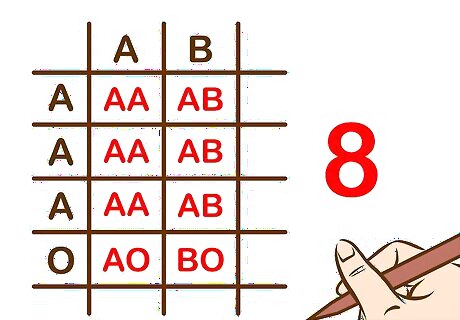
Write out possible blood types. Each square in the Punnett square represents a blood type that the baby could have. Within each square, write the allele from the mother and the allele from the father that correspond to the row and column of that square. For example, you would fill in the first square with the “A” allele from the father and the “A” allele from the mother.

Count how many boxes are present. The number of boxes present will tell you how many possible gene combinations could be passed down to the baby. This is important for determining the chances of any one blood type being passed down. Simply count the boxes to determine the number of possibilities. In the case of a parent with type “A” and a parent with type “AB,” there will be eight boxes.

Add up the number of each blood type. Once you have counted the number of squares, count the number of each blood type. There are likely duplicates in some of the squares. The duplicates mean that there is a higher chance for that blood type emerging in the baby. For example, you might have eight squares total with three AA’s, three AB’s, one AO, and one BO.
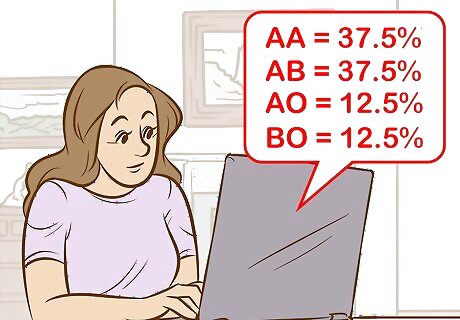
Calculate the percent chance of each blood type. To do this calculation, you only need to take the number of squares occupied by a certain blood type and divide it by the total number of squares. Playing off of the example above, the chances of each blood type would be: AA = ⅜ = 37.5% chance AB = ⅜ = 37.5% chance AO = ⅛ = 12.5% chance BO = ⅛ = 12.5% chance In this case, there is a 50% chance that the blood type will be A, since both AO and AA will express as blood type A.













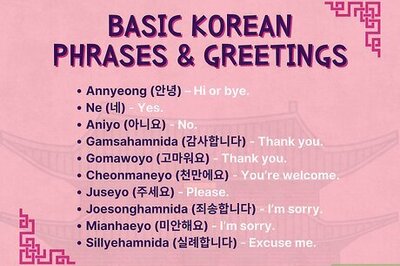

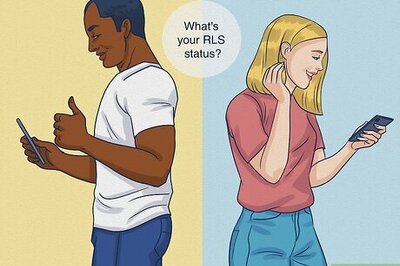

Comments
0 comment